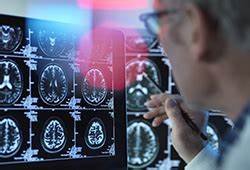Understand the FDA’s guidance on Digital Health Technologies for remote data acquisition, emphasizing the importance of meticulous selection and evaluation in clinical research.
The Food and Drug Administration (FDA) has issued very comprehensive guidelines on the application of Digital Health Technologies (DHTs) in clinical investigations. In fact, this new guidance, titled “Digital Health Technologies for Remote Data Acquisition in Clinical Investigations,” addresses all the key elements that sponsors, and other stakeholders should consider before the application of DHTs within a clinical setting is deemed appropriate and effective.
For instance, the FDA guidance emphasizes for sponsors to seek help from DHT manufacturers or other appropriate individuals in obtaining fundamental information that DHTs would be appropriate for a particular clinical study. Sponsors do not have control over the life cycle processes of the DHT but must ensure continued appropriateness throughout its use in a clinical study.
Considerations for the Use of Digital Health Technologies.
Selection of a DHT
The following should be considered by the sponsor in selecting a suitable DHT:
Clinical Trial Population: The demographics, health conditions, language, and technical capacity of participants must be considered to ensure they can use the DHT effectively.
Technical Specifications: It must define minimum technical and performance specifications of the DHT necessary for its intended use in the clinical investigation.
Design and Operation: Analysis of aspects of DHT design, user-friendliness, feedback mechanisms, power and storage of data capacity and operation specifications.
Design and Operation of DHTs and Other Technologies
There are many key issues to be addressed concerning the design and operation of DHTs:
User Interface and Design: Concerns about comfort, ease, and friendliness to the participant define their compliance with using a wearable DHT during the study period.
Data Transmission and Blinding: In the event of data transmission or results from the DHT, there would be potential behavior changes in the participants. There needs to be consideration for ensuring that blinding or masking of data is also in place when necessary.
Power and Operational Specifications: All of these include battery life, data transmission frequency, and storage capacity, all of which should align with what has been required within the study protocol to minimize missing data.
Environmental Influences and Cybersecurity: Accommodating environmental factors that affect DHT performance and building solid countermeasures against cybersecurity threats and unapproved access to data.
Use of Own DHT and/or Other Technologies
Considering offering the option to allow participants to use their DHTs and/or other technologies with which they are familiar:
Advantages and Disadvantages: Balancing the merit of granting participants the use of their DHTs to avoid further burden while trying not to create too much restriction, especially for highly specialized DHTs.
Sponsor-Provided Options: Providing availability of sponsor-provided DHTs and telecommunication services for participants in case they do not have their own devices or only limited access.
Conclusion
FDA’s draft guidance on Digital Health Technologies for Remote Data Acquisition in Clinical Investigations marks the need to use the appropriate caution when selecting, testing, and monitoring the appropriateness of DHTs in all clinical research. A sponsor should be able to satisfy the varied requirements of participants, technical conditions, usability, data security, and provide access to participants who wishes to integrate DHTs into clinical investigations successfully. This guidance gives a significant framework for stakeholders navigating complex integration of DHTs in clinical research.
Contact BioBoston Consulting today or visit our website to learn more about how we can support your organization.


